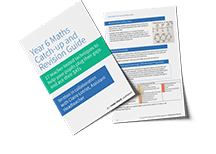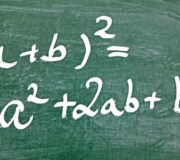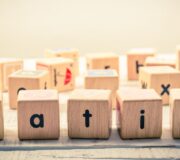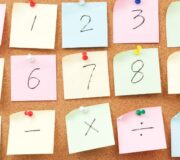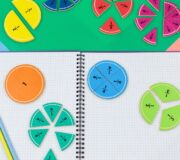The 11 Educational Principles That Will Help You Make The Most Of Your SATs Revision
To create an effective SATs revision programme that’s been used in over 200,000 of our one-to-one online tuition sessions, we have a responsibility to make it the best we possibly can!
To make this happen, our dedicated Teaching & Learning Team has spent hundreds of hours deep in the literature, academic expertise and pedagogical principles. This research is then coupled with our cumulative experience as teachers about what works for maths tuition (and what doesn’t).
As regular readers will know, we’ve always tried to share as much expertise as we can on this blog; our own expertise and that of teachers and leaders like you working in schools every day.
Inspiring your SATs revision
Here, we’ve set out to show you exactly how we’ve implemented educational research in our SATs 2023 revision programme. We hope it will help you make your own SATs revision even more effective for your Year 6 pupils.
We’ll share plenty of actionable tips, insights and advice to support your own revision planning, from the defining features of a successful SATs revision programme to the pedagogical principles worth considering.
As usual, if you want to discover more about our online maths tuition, or any aspect of this KS2 SATs programme, just get in touch!
Read more: A Tried And Tested Lesson Structure For Year 6 SATs Revision
What are the defining features of a successful SATs programme?
SATs strategies for exam success
Pupils should be given the opportunity to practise assessment-style questions to actively apply their learning. This works in tandem with plugging gaps and securing key concepts.
We want our pupils to leave their SATs revision sessions with strategies they may not otherwise be familiar with; these strategies could prove essential when tackling their papers.
Over the course of our SATs revision programme, pupils will see 8 different strategies to help them answer their SATs-style questions correctly and efficiently. These SATs strategies include keywords, crossing off, and remembering units, as well as pictorial representations such as bar models.
Another useful example is fractions. We use images to cement why something like 3/4 (three quarters) is the same as 9/12 (nine twelfths). For some pupils, this is the lightbulb moment that secures a concept and enables them to apply this in various contexts.
Being realistic about what’s possible
Third Space Learning Terminology
You might not be familiar with our various (primary and secondary) tuition programmes. They can broadly be split into two types at KS2.
1. KS2 Catch Up Programme
Address misconceptions, build solid foundations, catch up with national curriculum content and prepare for the challenges ahead. Lessons can either be:
– Selected automatically each week based on the results of initial and ongoing assessments (the ‘diagnostic’ option);
– Selected by the teacher each week to align with in-class teaching or specific goals (the ‘teacher selection’ option).
2. Revision Programme
Dedicated SATs revision lessons available from January to May. They are designed to build confidence and familiarity with SATs-style questions. Each pupil receives a personalised programme intended to have maximum impact on exam success.
The simple difference between our revision and diagnostic programmes is the depth versus breadth idea.
In the diagnostic programme (and during classroom teaching), we are dealing with fewer complexities; we teach, we practise, we problem solve. In the SATs programme (and during classroom revision), it’s all about application.
On the one hand, you wouldn’t want to start procedural teaching and rushing pupils forward when they’re not ready to move on. However, the realities of a revision-focused intervention programme are such that we don’t have time to deepen a pupil’s knowledge of all concepts.
Remembering that revision = consolidation
Revision (at every level of the education system) is inherently about prioritisation and compromise. It’s also about acknowledging the steps that will reap the greatest reward while promoting a love of maths outside the context of SATs.
It’s often best for the tutor or teacher to focus on unpacking the questions (rather than the whole concept). They can build models to help pupils solidify their understanding of a concept through the vehicle of an exam-style question. This is what happens in our SATs revision lessons, and doubtless in thousands of classrooms up and down the country.
The order of SATs revision lessons
A sensible approach to revision is prioritising topics by their impact on SATs. These could be topics traditionally providing the most marks, or those that are most likely to come up in papers each year. We prioritise pupils’ learning in our programme using this metric, as well as covering overlapping content in single lessons.
For example, our ‘Reasoning with Metric Measures’ lesson deals with ordering decimals, metric units and conversions, all at the same time!
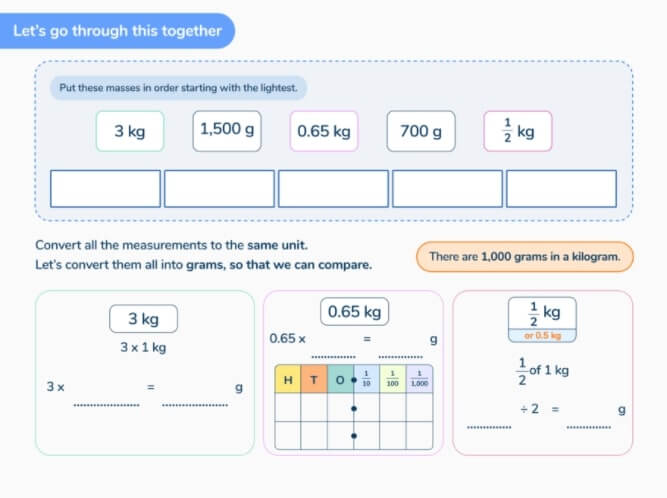
Across 13 weeks, distributed practice is key, but we also want the pupil to end their Third Space Learning intervention journey with the most important curriculum area.
Tackling the maths curriculum in context
Indeed, the biggest problem with SATs is often problem-solving.
In other words, it’s breaking out what has been asked of the pupil, establishing the order in which to tackle a particular question, and working out what to ignore. SATs questions often involve multiple ideas overlapping, rather than examining one area of the maths curriculum at a time.
Therefore, by practising curriculum-aligned exam-style questions in our revision sessions, alongside the support of a one-to-one tutor, pupils can start to become more confident with what SATs questions look like and what they’re looking for.
Prioritising problem-solving during revision
We’ve even modified our revision programme to reflect the importance of application!
Before, a lesson would offer general support for revising a topic, followed by SATs questions. Now, each lesson starts with a question. This means that the pupil must face this head-on and apply what they know (or can remember).
Unlike the diagnostic programme, there is an assumed level of knowledge from the pupil at the revision stage, but this doesn’t mean the tutor is unable to go back and support them. Great maths revision programmes will always overlap with aspects of catch-up interventions, such as plugging learning gaps as required.
Differentiated maths revision is essential to effective KS2 SATs preparation in Year 6. How do you support some pupils to solve multi-step word problems involving different calculations when others are still struggling to apply their learning to a simple one-step problem, a missing number calculation, or even just ordering numbers?
We believe that one-to-one interventions are the most cost-effective answer!
Read more: Year 6 SATs Revision Planning
Solving problems one step at a time
In our SATs revision programme, we take a structured and stepped approach to lessons and individual problems. Some of the questions are broken into three steps, featuring scaffolding, small steps and visualising, depending on the individual pupil.
They might also be encouraged to write out their steps as they go to record the journey from initial question to final answer (as they would in the test itself).
Read more: How To Create A Year 6 Maths Revision Programme So That All Your Pupils Achieve 100 In KS2 SATs
Year 6 Maths Catch-Up & Revision Guide
17 teacher-tested techniques to help your pupils ace their SATs from Assistant Head and Tes blogger, Claire Lotriet!
Download Free Now!The design of the lesson slides
Design and maths content should work in harmony to support pupils, whether that’s classroom presentations, intervention lesson slides or worksheets.
And by ‘support pupils’, we mean every single pupil. For neurodiverse pupils, this can play out in font size, breaking up the information, how it flows across the screen and how much space to add workings and answers.
For example, we have blue and yellow filters on our current online learning platform for those with dyslexia. For other pupils, tutors may avoid rubbing out workings during the session.
Ultimately, we must consider how each unique pupil might consume and interact with revision lessons. At Third Space Learning, we are currently moving towards an option for learners to listen to (rather than just read) our Post-Session Questions.
Finally, the design of our lesson slides is inspired by the principle of dual coding. We use colour to focus attention throughout the lesson.
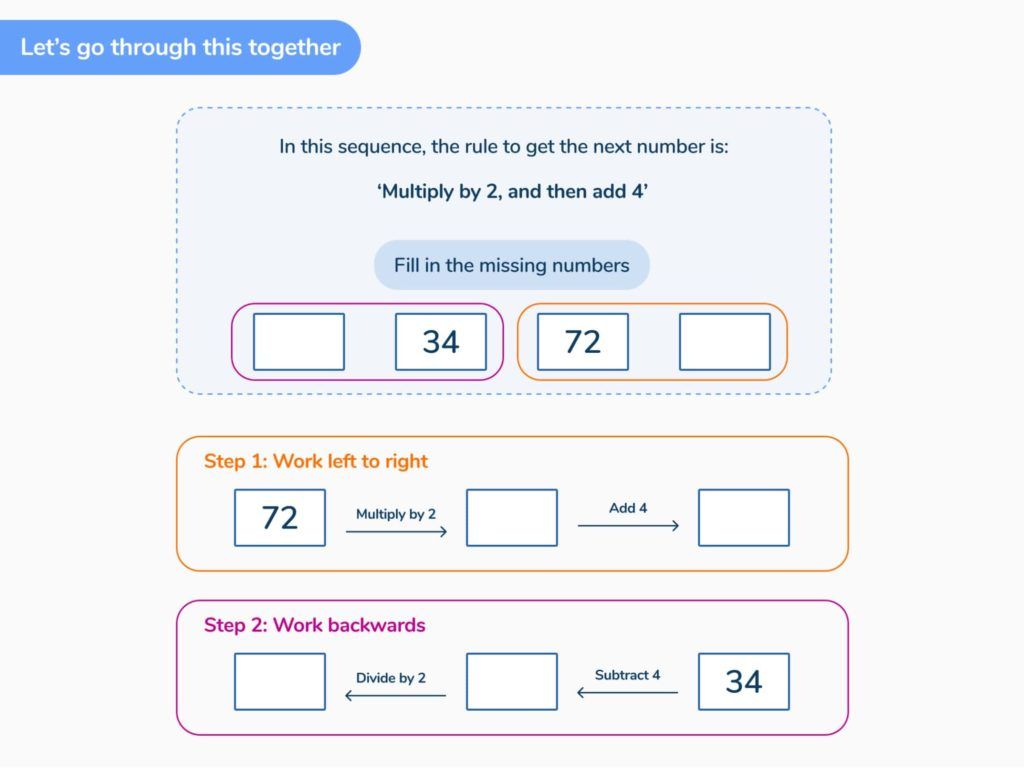
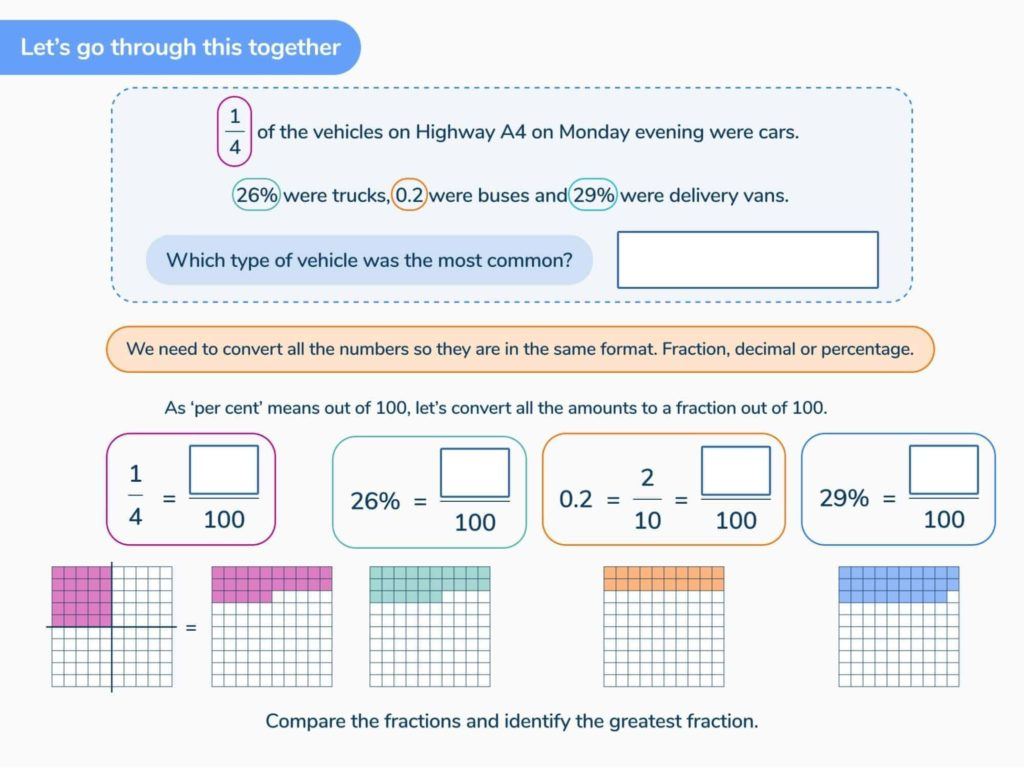
Read more:
11 pedagogical principles inspiring our SATs programme
You might be asking yourself what you should be looking for in a great KS2 maths revision programme. Well, we’ve already done the hard work for you, and split the research guidance into eleven ingredients to encourage SATs success!
1. Interleaving
A maths revision programme should ensure that pupils have interleaved practice, where they return to concepts at regular intervals, rather than covering it all at once.
The Teaching & Learning Team at Third Space Learning was conscious of not having extreme interleaving within a single session. We could have just gone down the route of working through SATs past papers, but instead, we group lessons into three different types of questions on something like fractions. This allows the pupil to return to a concept from different angles via three different sets of (related) concepts within a single session.
Fundamentally, you want pupils to be able to extract the right strategy. For example, in a SATs question, a pupil might be expected to convert a mixed number into an improper fraction, then add together, then find the difference.
“SATs problems consist of multiple ideas, so it’s important for our revision programme to reflect this.”
Candida Crawford, Head of Academic Standards at Third Space Learning
Our SATs revision lessons draw on a variety of skills from different areas of the curriculum, hence we only have a single lesson (out of 25) that is explicitly about place value. We naturally cover core content such as addition and subtraction, and multiplication and division, but these overlap between numerous lessons.
As a team, we are iterating on our approach all the time to maximise the programme’s value. Previously, we might have clumped all of ‘fractions’ together. Now, we’ve spaced them out across different lessons. For example, if a pupil is focusing on money and decimals, they would’ve done metric measures before that.
Another example of crossover is the relationship between ordering whole numbers, decimals, scaling and place value. Because the decimal number system works with 10ths (1/10), these concepts can also be applied to ratio and multiplying or dividing by 10.
In the longer term, this becomes distributed or spaced practice, where there’s spaced repetition of short sessions over time. Indeed, this also avoids cramming all of the maths revision content into the last few weeks before the tests!
Through this approach, a pupil wouldn’t cover all of place value in isolation for the whole of one term, but view this as part of an interconnected mathematical constellation.
2. Retrieval
Retrieval follows the basic idea of ‘test me and I’ll improve’. First, a pupil would try retrieving Year 3 and 4 content, and then content from September, and so on.
This retrieval practice is linked to the order of our SATs revision programme. We have already considered what they would’ve learnt from September to December and matched this to NCETM, White Rose Maths, and ‘ready to progress’ materials.
3. Growth mindset
Progress in maths is not always smooth or linear, and setbacks will occur. If a pupil is struggling with a particular question in their SATs revision lesson, tutors or teachers should be there to constructively and positively unpack it.
A pillar of our one-to-one teaching philosophy (and tutor training) is to help pupils develop a growth mindset, as well as their maths knowledge and skills. Pupils are encouraged to tackle high stakes questions in a low stakes environment, independent of their peers, but alongside their one-to-one tutor, who can address any misconceptions and offer feedback.
We motivate pupils to tackle activities just within their Zone of Proximal Development (ZPD) and thus build their resilience to tackle a variety of (potentially daunting) questions.
Revision programmes should be about mathematical exploration and fostering a growth mindset in the classroom, all the while bolstered by expert support. For example, the related fluency question at the start of our lessons allows the pupil to practise arithmetic, which is especially important given the introduction of the arithmetic paper back in 2016.
Each lesson has been created, refined and reworked by the Teaching & Learning Team to enable the tutor to teach any given topic at the ability levels appropriate for the pupil.
Read more: Why A Culture of Growth Mindset in Primary School Is Still Important
4. Variation theory
Variation theory, and more specifically procedural variation, is implicit in our SATs revision programme through the three sets of questions in each lesson.
Sometimes, these sets have quite different contexts. For example, the first set might be a 1-mark question, set two is harder and set three is the hardest (varying in procedure and going deeper into a concept than the previous two sets).
Conceptual variation would be most evident within a single question set. For example, we might show the same difference between a bar model and a number line.
Nonetheless, the best-case scenario and ultimate goal of this kind of programme is revision practice. If you surface a lot of variation, the pupil doesn’t necessarily have a chance to consolidate that within the realistic time allowance of revision sessions.
5. Cognitive load theory
Cognitive load theory in the classroom is intrinsic to the planning of our SATs programme, lessons, and individual slides, and is a concept that we always advise bearing in mind.
If part of a lesson is too ‘busy’ (too many concepts, words, visuals), we break it up before it even reaches the pupil. Particularly in the ‘Let’s go through this together’ portion of the lesson, this might extend onto two slides to reduce cognitive load.
Using a stepped process, and visualising these steps, also supports the pupil to signpost where they are as they move through a problem. From a tutor or teacher perspective, working memory should be factored in by scaffolding and unpacking where necessary.
6. Diagnostic assessment
A revision programme rooted in pedagogical principles is all well and good, but you might be wondering how 25 expertly crafted lessons can be navigated in 13 weeks! The answer is our diagnostic assessment (called Mission Zero), which all pupils sit before they even begin their interventions across all of our maths tuition programmes.
Revision is not one-size-fits-all, so we would recommend diagnosing particular pain points for your pupils. Our diagnostic assessment makes sure that we put the right content in front of pupils to make the most of their time with us.
This assessment (highlighting areas of strength and improvement from carefully considered questions) produces a RAG rating for our high-impact lessons to show teachers what we recommend covering during the interventions.
Although the RAG diagnosis partly aims to reduce the workload for the teacher, we understand that teachers know their pupils better than anyone. Therefore, we also offer the option to overrule our suggested order and pick and choose from our 25 lessons framed around the Year 6 national curriculum.
For example, a teacher may feel that a pupil actually does need more practice in a ‘green’ topic, or they might require extra personalised support on a particular topic covered in the classroom that week.
Read more: Your Intervention Must-Have: A Formative Maths Diagnostic Test
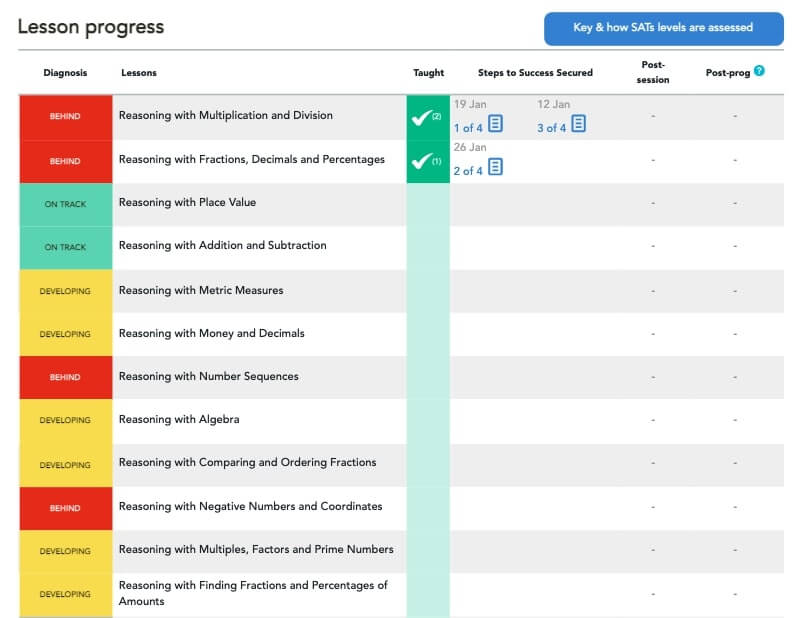
7. Metacognition
Metacognition in the classroom is intrinsically linked to encouraging self-explanation and introspection. It’s being able to articulate what you’re doing and why you’re doing it to demonstrate and solidify your understanding.
We’ve found that frontloading exam-style questions in our revision lessons is one way of achieving this. It puts pupils in the space of thinking for themselves, much like SATs! They can ask “What do I know?” and “What don’t I know?”, rather than the tutor jumping in with the next step.
Our effective tutor training places great emphasis on metacognition, sitting under the umbrella of pupil-centred teaching. Put simply, this is about good questioning and well-designed slides, that allow metacognition and scaffolding to be effortlessly interwoven into revision.
“Metacognition is about understanding what strategies and approaches to take. Scaffolding this structure helps to show pupils how to think and approach similar problems next time.”
Candida Crawford, Head of Academic Standards
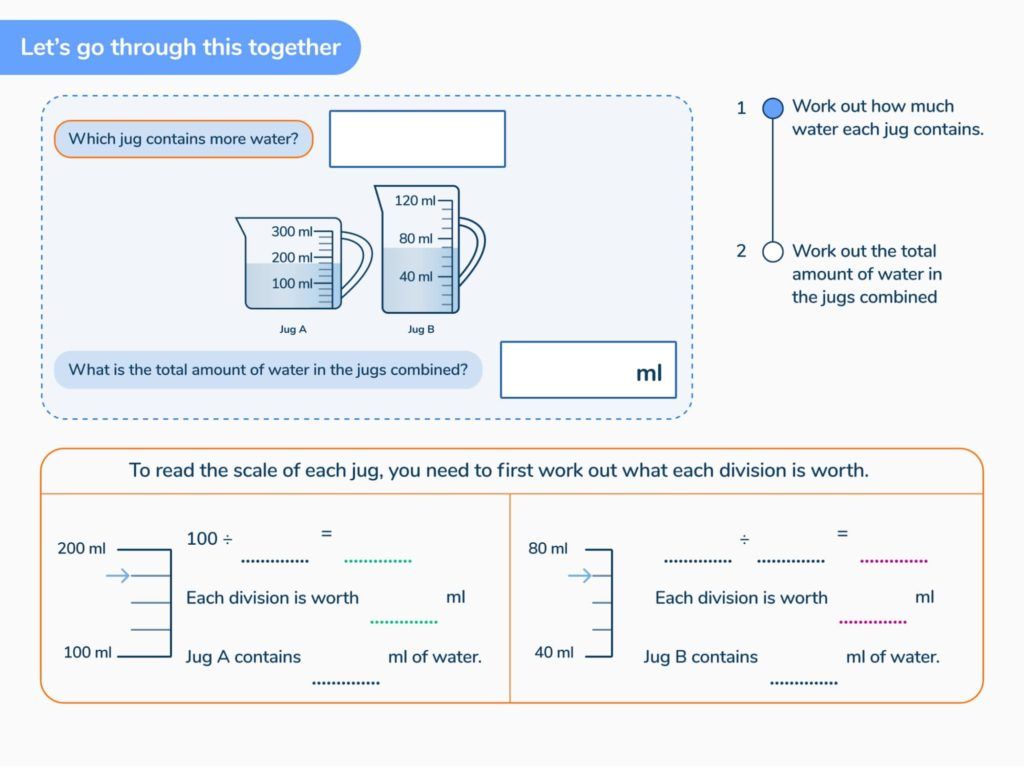
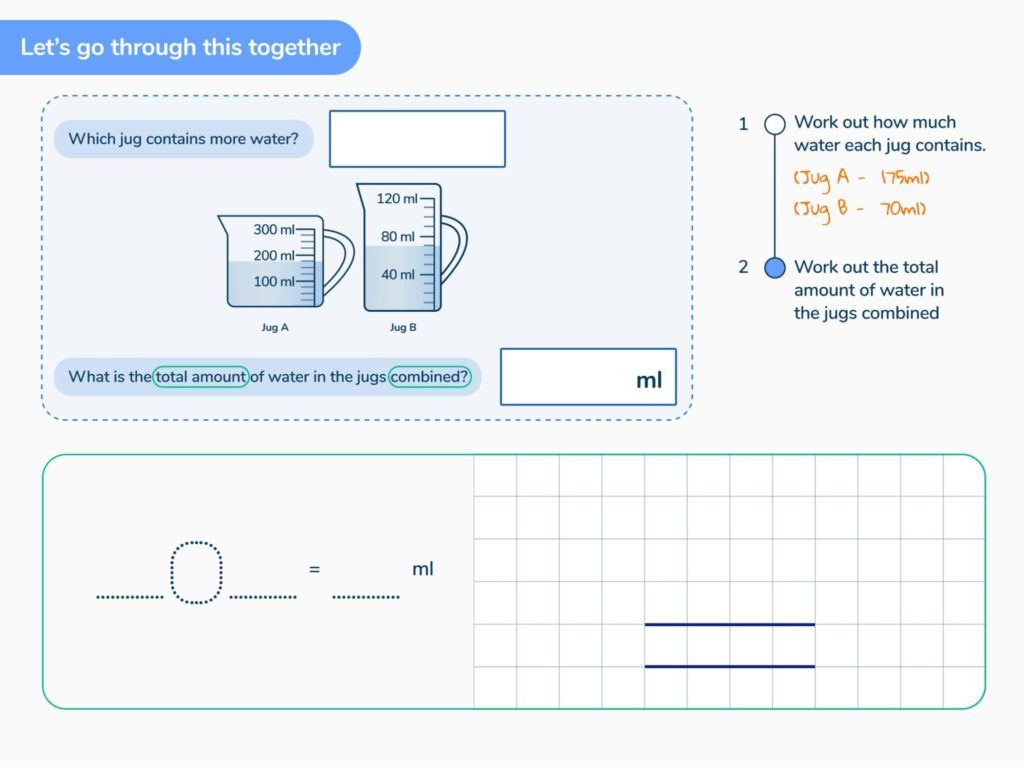
Tutors are encouraged to approach questioning creatively and are assisted by ‘Hint buttons’ on the slides, such as ‘Use a drawing’. This might lead to the following questions:

- What type of diagram would be able to visualise this difference?
- Why don’t you try and show it with a bar chart?
- Would that be longer or shorter?
- How could you draw the total?
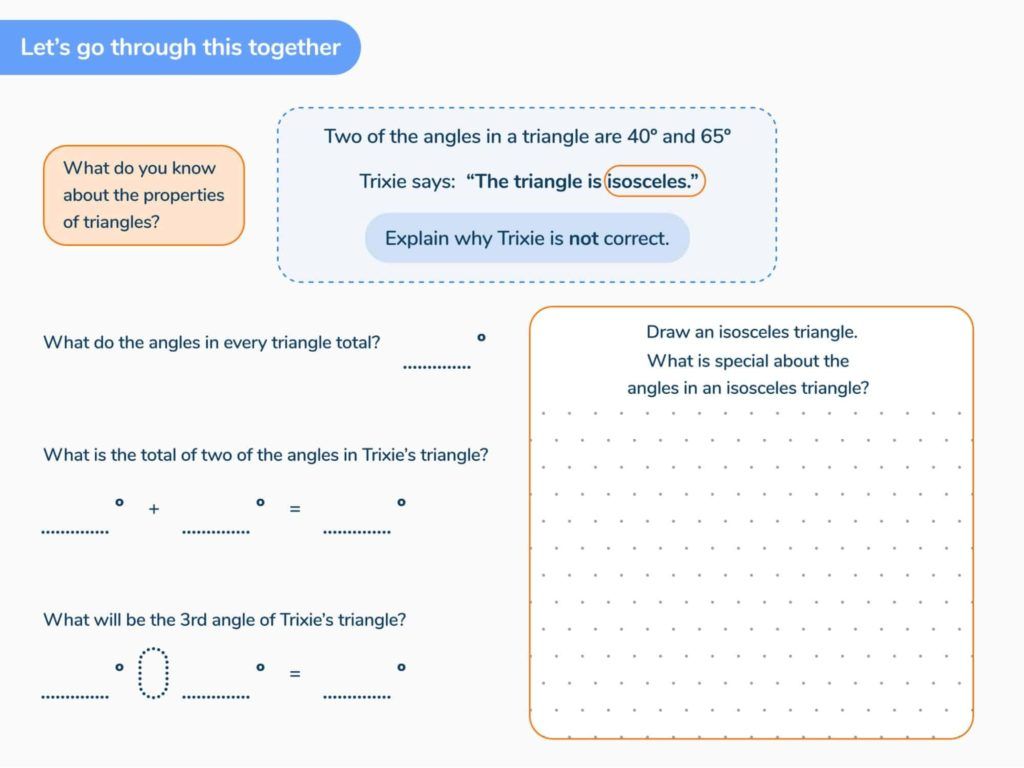
At the start of our detailed tutor notes, they receive three key pieces of information, which could easily be transferred into a classroom revision context.
- What is each question addressing?
- What skills and understanding does the pupil need?
- What key vocabulary are they going to need?
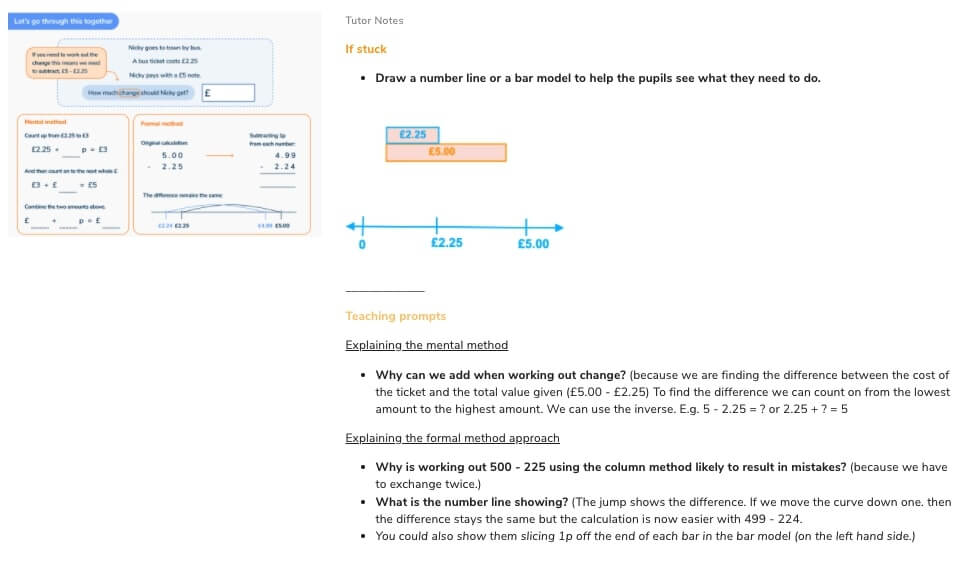
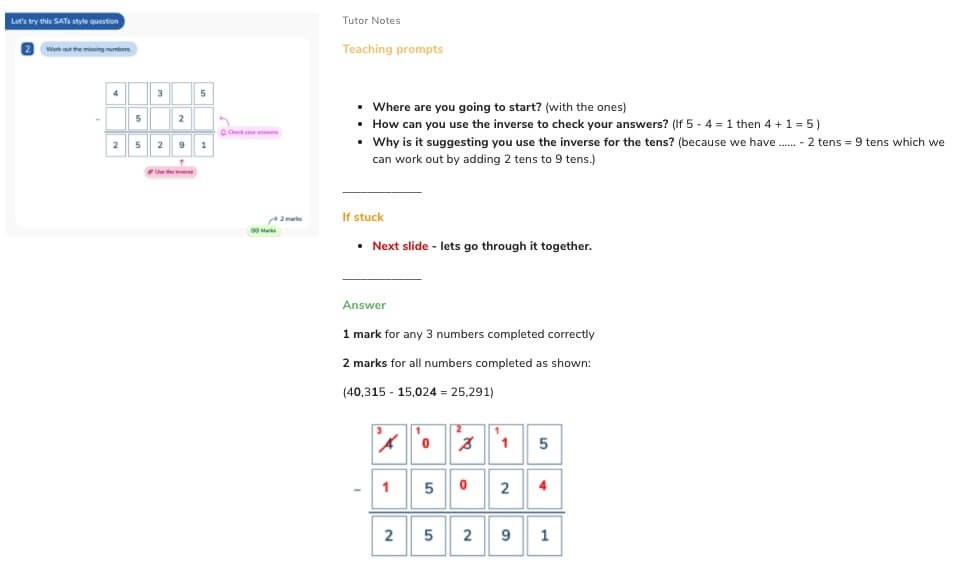
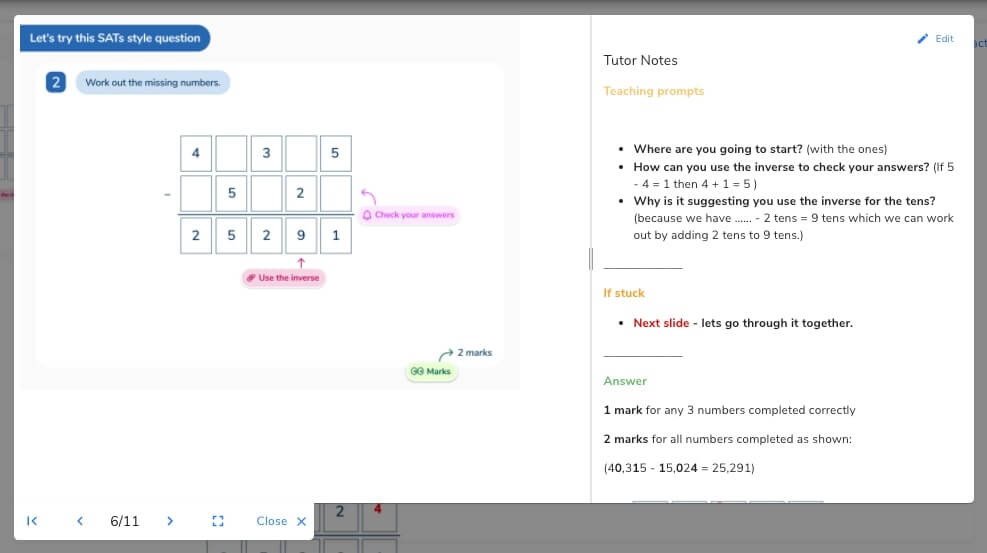
Wondering how these kinds of learning strategies are experienced by real schools? Look at what St Giles C.E. Primary School had to say in their recent case study!
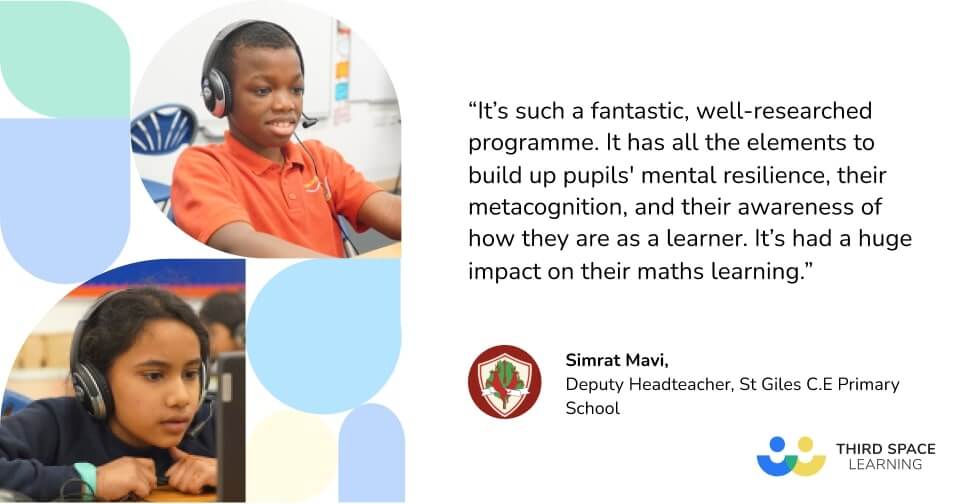
8. Tier 3 vocabulary
Consistent vocabulary in areas such as lessons, interventions and resources becomes even more important around SATs revision time. Pupils, teachers (and interventions) need to be articulating maths in a way that’s compatible with SATs papers, especially as stronger connections between previously covered topics are sought.
Our tutors are briefed on the key maths vocabulary for each lesson, and this vocabulary is also bolded for the pupil. The ‘Keywords’ button reminds pupils of another helpful SATs strategy when tackling assessment-style questions, such as “What does ‘decrease’ mean?”

We also use stem sentences across our different lessons to standardise vocabulary, which aligns the maths language in our online classroom to the actual classroom!
Read more: How To Help Primary School Pupils Develop The Maths Language Skills They Need To Succeed In SATs
9. Explicit instruction
In our SATs revision programme, explicit instruction can be linked more specifically to worked examples. Working through an example together often boosts a pupil’s confidence in their ability to tackle a SATs question from start to finish. Our wonderful tutors are central to this form of direct instruction, especially when a pupil needs more support.
You might be wondering how the (implicit or explicit) application of pedagogical principles compares to our diagnostic KS2 intervention programmes, which the pupil may have started on. The main difference is that everything in the SATs programme will have a ‘revision spin’. In other words, we recommend that worked examples are favoured (where possible) over extensive scaffolding and small steps for SATs revision.
10. Modelling
Modelling often comes down to providing an appropriate level of scaffolding, through approaches such as ‘I do, we do’ and example problem pairs. Our SATs revision lessons start with a ‘we do’ approach. The SATs pupil is likely to be doing a lot more independently than in our non-revision session, where content might be more unfamiliar.
It’s also important that a pupil sees the tutor or teacher as ‘on their team’. Third Space Learning pupils are empowered to be confident and capable mathematicians through the modelling provided by their one-to-one tutor.
Read more: 35 SATs Maths Questions And Answers With Worked Examples
11. Concrete pictorial abstract
In our online classroom, we consistently replicate a variety of concrete maths resources that pupils are likely to already be familiar with from the classroom! We recommend continuing to use these for classroom revision to visualise and experiment with SATs questions.
- Balance scales for algebra
- Part whole model
- Arrays for fractions
- Number lines
- Place value grid
- Hundreds square for percentage
- Bar model
Which theorists inspired the SATs programme?
A variety of theorists inspired and informed the pedagogical planning of our SATs revision programme. If you’re keen to explore further, they include:
- Albert Bandura
- Jo Boaler
- Jerome Bruner
- Oliver Caviglioli
- Carol Dweck
- Doug Lemov
- Barak Rosenshine
- Tom Sherrington
- John Sweller
- Lev Vygotsky
- Daniel Willingham
What are pupils saying about the SATs programme?
We wanted to share an assortment of real-life feedback we’ve received from pupils about the usefulness of our SATs revision programme! This might also shape how you perceive your own SATs revision from a Year 6 perspective.
General
- “I like Third Space Learning because it helps with my maths and the tutors are extremely helpful”
- “I really enjoyed today’s lesson and I am excited for next week’s lesson”
- “Everything I learnt in this lesson was important”
Curriculum
- “How to use place value charts properly”
- “I now know how to use place value in a much clearer way”
- “Place value is great to use for a tricky question”
- “How to use fractions decimals and percentages correctly and how to compare them”
- “Subtraction and addition can be needed in methods and marks within SATs”
SATs strategies
- “To highlight the important bits of the questions”
- “To cross numbers off as I work”
- “Always check your marking for the SATs question”
- “The inverse to make sure that my answer was correct”
- “I liked that we went through the answers”
What are teachers saying about the SATs programme?
Finally, here’s some feedback from our brilliant community of teachers like you about how the SATs revision programme has helped their pupils!
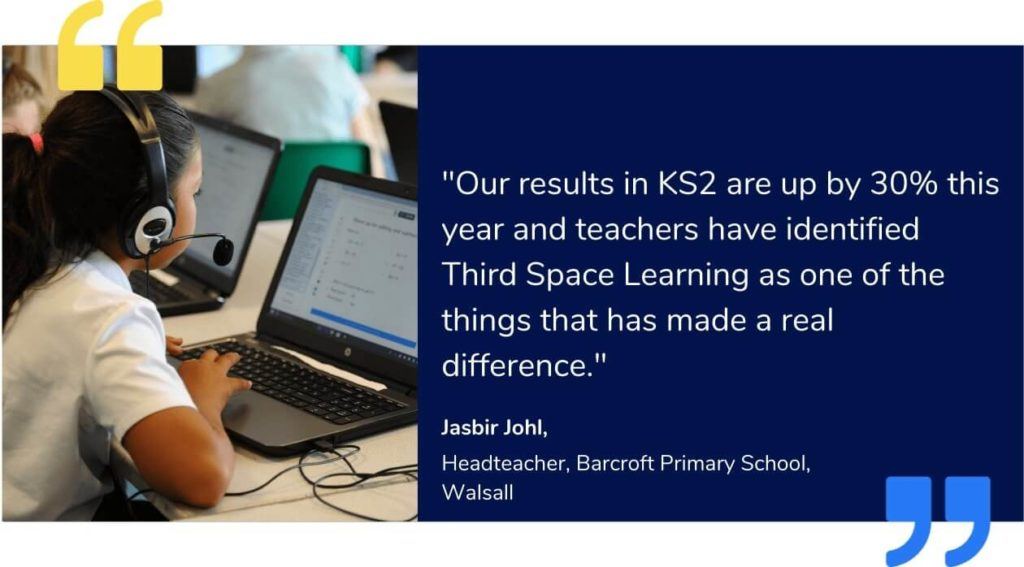
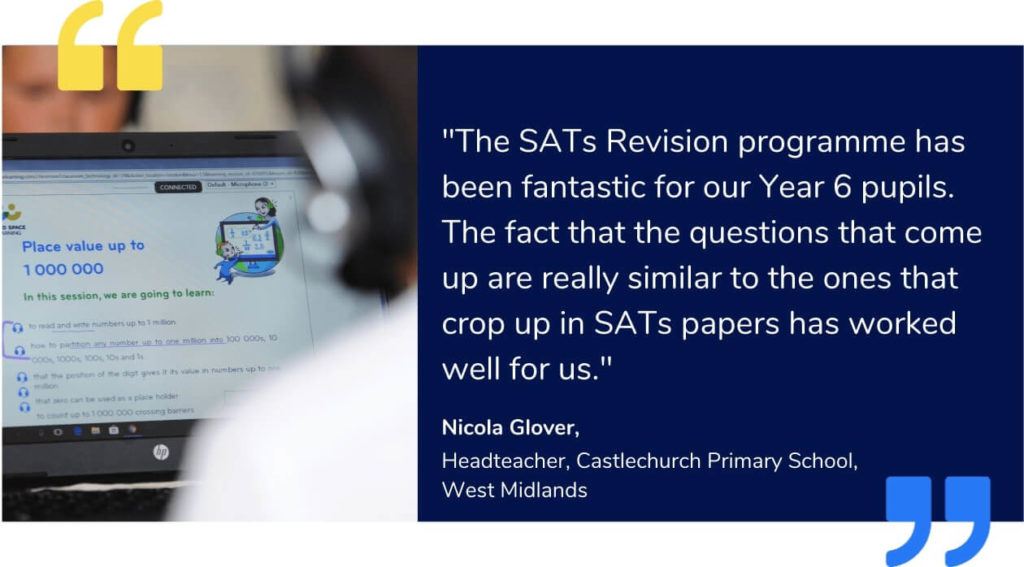
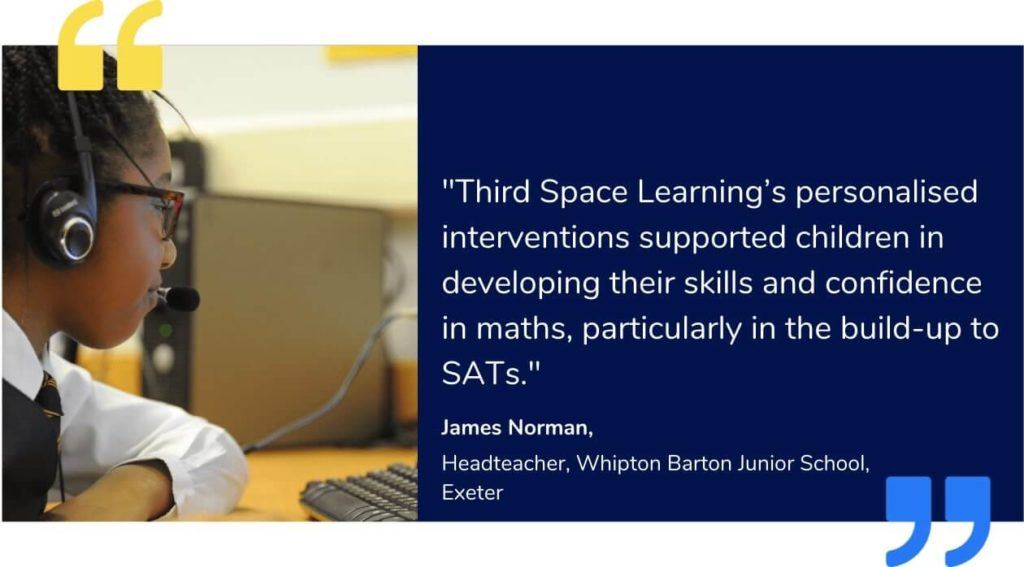
So, there we have it! Hopefully, the pedagogical principles that have inspired the design of our SATs revision programme will also inspire revision planning in your school.
Our Teaching & Learning Team works hard behind the scenes to make our programme the best it can be to support the attainment of Year 6 pupils around the country. We wish you and your pupils every success in SATs this year!
DO YOU HAVE PUPILS WHO NEED MORE SUPPORT IN MATHS?
Every week Third Space Learning’s specialist primary maths tutors support thousands of students across hundreds of schools with weekly online 1 to 1 maths lessons designed to plug gaps and boost progress.
Since 2013 these personalised one to one lessons have helped over 150,000 primary and secondary students become more confident, able mathematicians.
Learn about the SATs revision programme or request a personalised quote for your school to speak to us about your school’s needs and how we can help.

